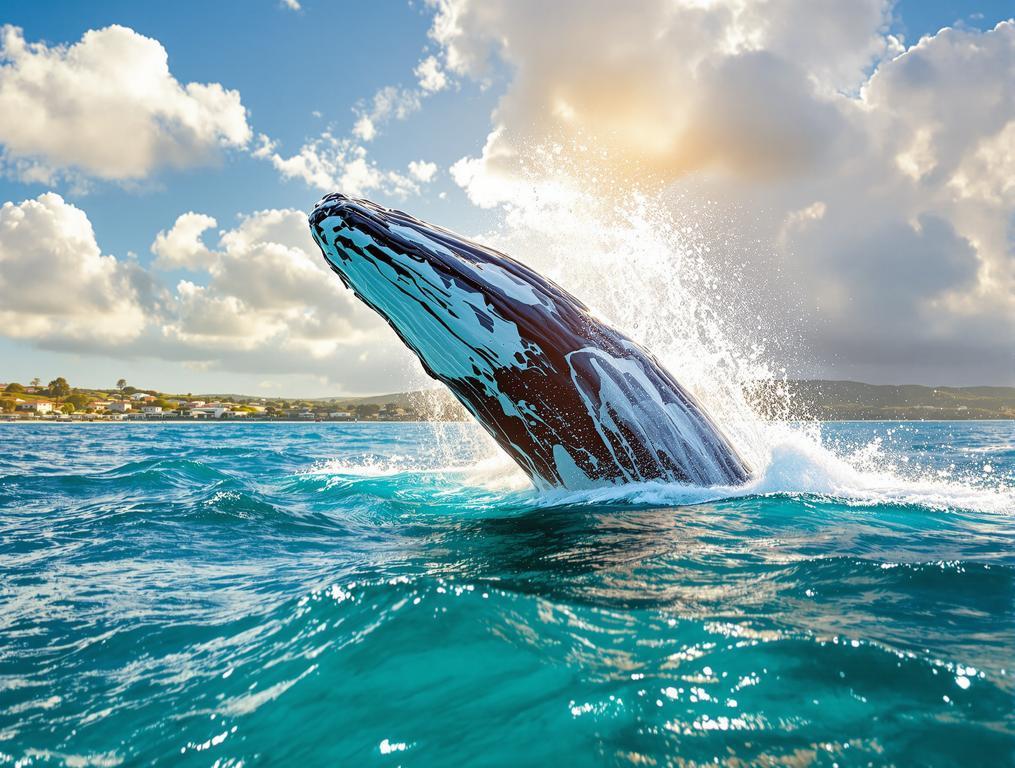I lean against the weathered railing at Black Head Reserve, watching a humpback whale breach less than a kilometer offshore. The morning sun glints off its massive body before it crashes back into the Tasman Sea. This is Gerroa, population 571, the southernmost town in New South Wales’ Illawarra region, where winter delivers an extraordinary spectacle that the locals have front-row seats to every day.
My watch reads 7:22 am, and I’ve already spotted four separate whale pods making their northward migration. A local surfer tells me I’ve timed my visit perfectly—the window for this natural highway is brief but spectacular.
The 6-Week Window: Why Gerroa’s Whale Migration is Australia’s Best-Kept Winter Secret
While most Australian beach towns hibernate during winter months, Gerroa transforms into a whale-watching paradise. From mid-June through early August, humpback whales pass within 1 kilometer of shore, close enough to spot with the naked eye from several vantage points.
“We see the Sydney whale-watching boats charging tourists hundreds of dollars, while we just grab a coffee and watch the same show from our front porch,” a resident tells me, gesturing toward the horizon where another whale spouts.
What makes this phenomenon remarkable is the proximity. Unlike commercial whale-watching in Queensland’s coastal towns, where boats must travel out to find pods, Gerroa’s geography creates a natural viewing corridor. The eastern headland and gently curved bay form a perfect theater for this annual migration.
Whales aren’t the only winter wildlife attraction. The area hosts remnants of littoral rainforest with rare subtropical species like Snow-wood and Illawarra Plum—plants typically found much further north. Like this Scottish village where tropical plants thrive, Gerroa nurtures botanical oddities that defy their latitude.
How a Town of 571 Residents Offers Better Whale Watching Than Commercial Tours
The contrast between Gerroa’s tiny population and its natural grandeur is striking. With just 571 permanent residents, this coastal hamlet offers wildlife experiences that rival commercialized destinations like Hervey Bay, where boats crowd the water during whale season.
“We moved here from Sydney three years ago. Now we watch whales with our morning coffee instead of commuting. The tourists haven’t discovered this winter spectacle yet—it’s still our secret.”
Like this Victorian town that survived devastating fires, Gerroa represents the resilient character of Australia’s small coastal communities. Its understated charm comes from what it lacks—crowds, commercialization, and costly attractions.
The town swells dramatically during summer holidays, but winter reveals Gerroa’s true character. Locals call this “kayo season,” their shorthand for perfect kayaking conditions when the Crooked River’s waters run clear and calm. The 15-meter elevation of the town provides panoramic views from almost any vantage point.
For travelers seeking natural wonders without crowds, Gerroa offers the same intimate experience as this Wisconsin town known for accessible sea caves but with a Southern Hemisphere twist—the winter migration of Earth’s largest mammals passing just offshore.
What the guidebooks won’t tell you
The best whale watching isn’t from the obvious lookout at Sir Charles Kingsford Smith Memorial. Instead, head to the unmarked trail behind Black Head Reserve where locals gather at a small clearing with unobstructed views. Arrive between 7:00-9:30 am when the morning light illuminates the water and whales are most active.
Bring binoculars if you have them, but they’re not essential—the whales come remarkably close. The Blue Swimmer restaurant opens at 8:00 am during whale season, offering takeaway coffee with spectacular views.
Visit Gerroa between July 10-25 for peak migration numbers, when up to 30 whales per day might pass by. If you’re planning ahead for 2025, book accommodation early—with only 571 residents, lodging options fill quickly even in winter.
As the morning advances, I watch Emma, my seven-year-old daughter, point excitedly at another breach. My wife Sarah captures the moment—a tiny human silhouette against the vastness of ocean and leaping whale. This is Gerroa’s magic: a place where nature’s grand performances play out before an audience of fewer than 600 people. In a world of overcrowded destinations, this tiny town offers something increasingly rare—a front-row seat to nature’s greatest show, without the crowds. The whales keep coming, and for now, Gerroa keeps its winter secret.
